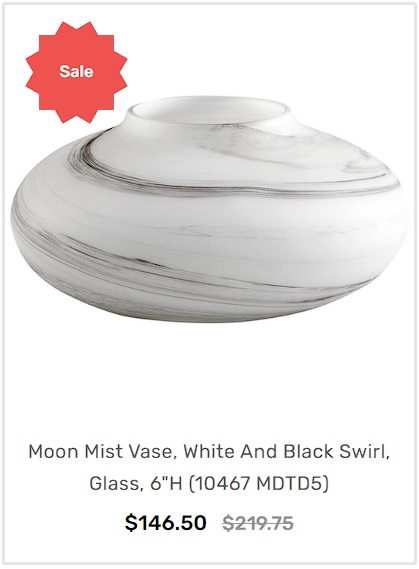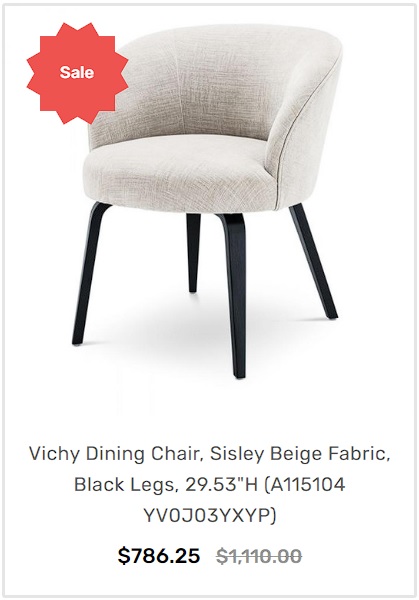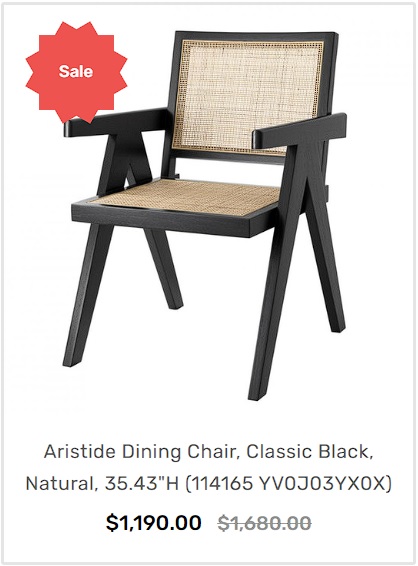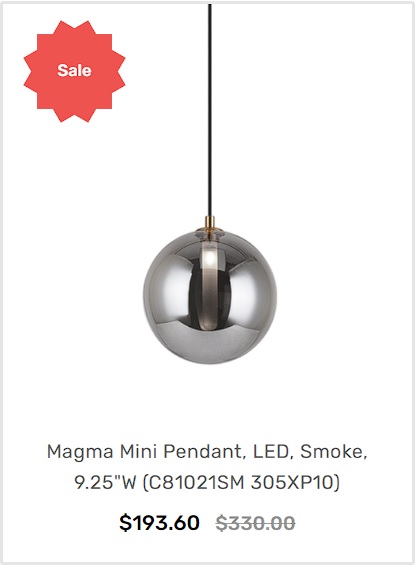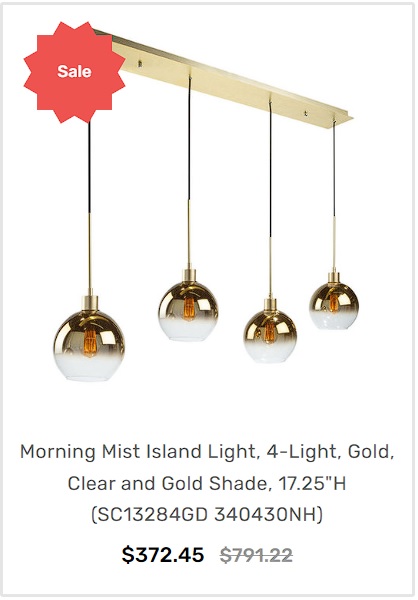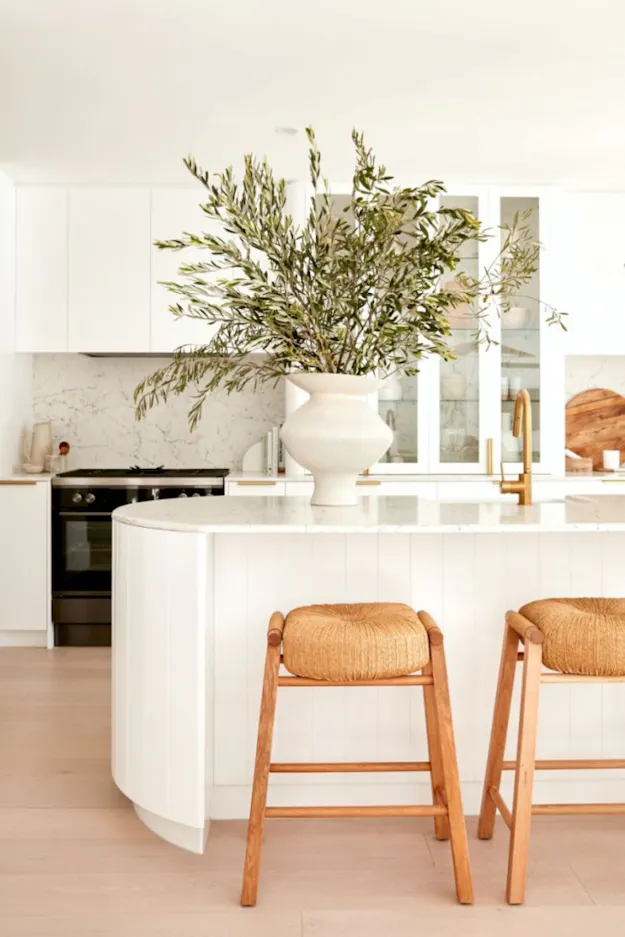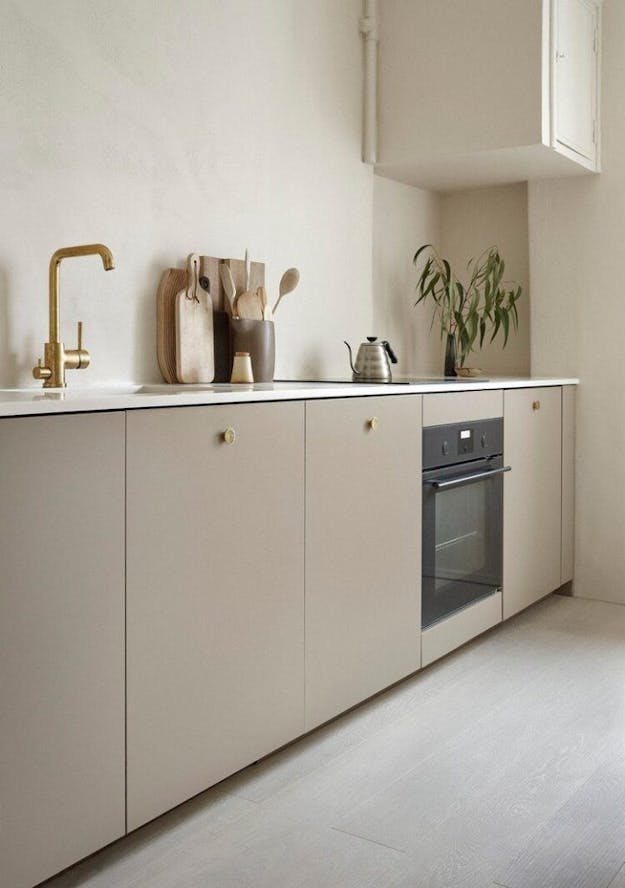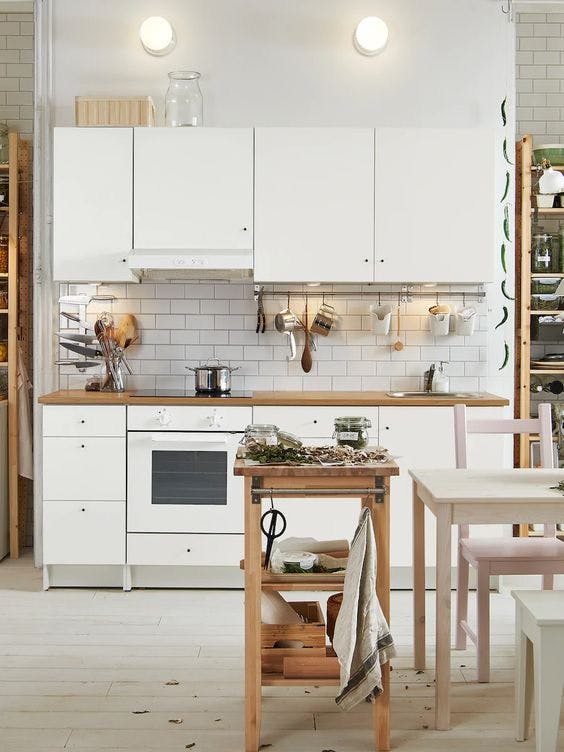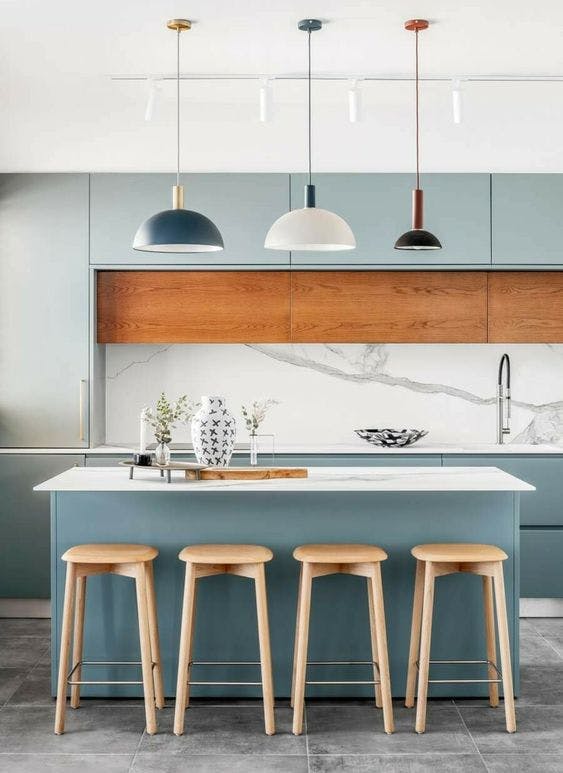Small Kitchen with Peninsula: Make the Most of Your Space
In the realm of modern interior design, few elements stand out quite like a well-placed kitchen island. These versatile additions have swiftly become the hallmark of contemporary kitchens, revolutionizing the way we interact with this essential space.
A kitchen with an island isn’t just a place to prepare meals; it’s a dynamic hub where functionality meets style in perfect harmony.
In this comprehensive guide, we’ll take you on a journey through the world of kitchen islands, unveiling the myriad benefits and creative possibilities they bring to your culinary haven.
From space optimization to multifunctional workstations, and even serving as a social nexus, the advantages of incorporating a kitchen island are as diverse as they are impressive.
Whether you’re embarking on a kitchen renovation with interior designer or simply seeking inspiration for optimizing your existing space, this guide is crafted to provide you with insights, tips, and ideas that will elevate your kitchen’s aesthetic and functionality.
So, let’s dive into the art of designing kitchen islands, and discover how this transformative feature can truly redefine the heart of your home.
The Functional Advantages of Kitchen Islands
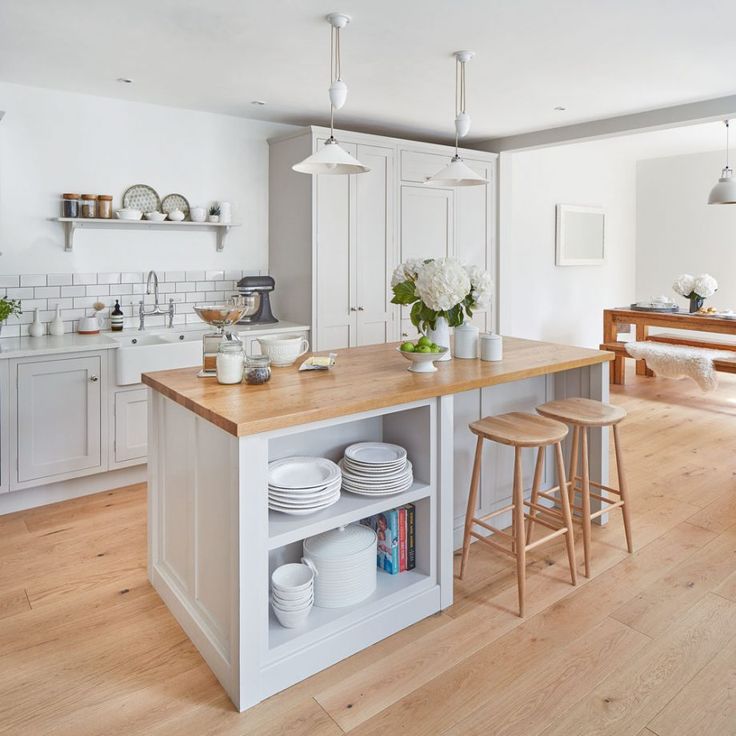
When it comes to modern kitchen design, the addition of an island can transform a functional space into a truly exceptional one.
Kitchen islands have become a hallmark of contemporary homes, and for good reason. They offer a myriad of practical benefits that can revolutionize the way you use and interact with your kitchen.
Space Utilization

One of the most notable advantages of incorporating a kitchen island is its ability to maximize space. In smaller kitchens, where every inch counts, an island provides invaluable additional storage space and workspace.
Cabinets and drawers integrated into the island can house cookware, utensils, and even small appliances, reducing clutter on countertops and in other areas of the kitchen.
This means you can keep essential items within arm’s reach without sacrificing a clean, uncluttered look.
Multifunctional Workstations

Beyond its storage benefits, a kitchen island serves as a versatile workstation. It’s not just a place for meal preparation; it’s also an ideal spot for casual dining, homework sessions, or even a makeshift office space.
The expansive surface area allows for multiple activities to take place simultaneously, making it a hub of productivity and functionality in your kitchen.
Social Hub
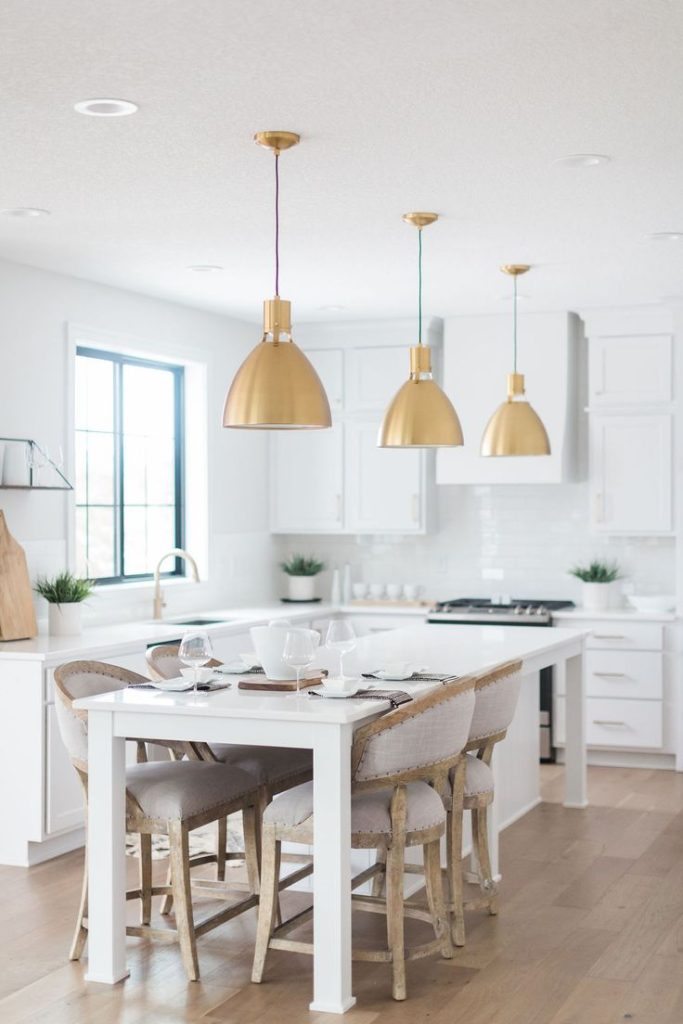
In the heart of many homes, the kitchen is where family and friends naturally gather. With a kitchen island, this social dynamic is amplified. It becomes a central meeting point where conversations flow, meals are prepared together, and memories are created.
Whether you’re hosting a formal dinner party or simply catching up with loved ones over a cup of coffee, the island provides a natural focal point that fosters connection and camaraderie.
In essence, a kitchen island is not just a piece of furniture; it’s a dynamic, multifaceted feature that enhances the overall functionality and livability of your kitchen space.
In the following sections, we’ll delve deeper into the nuances of designing the perfect kitchen island and explore the various elements that contribute to its seamless integration into your culinary haven.
Designing the Perfect Kitchen Island
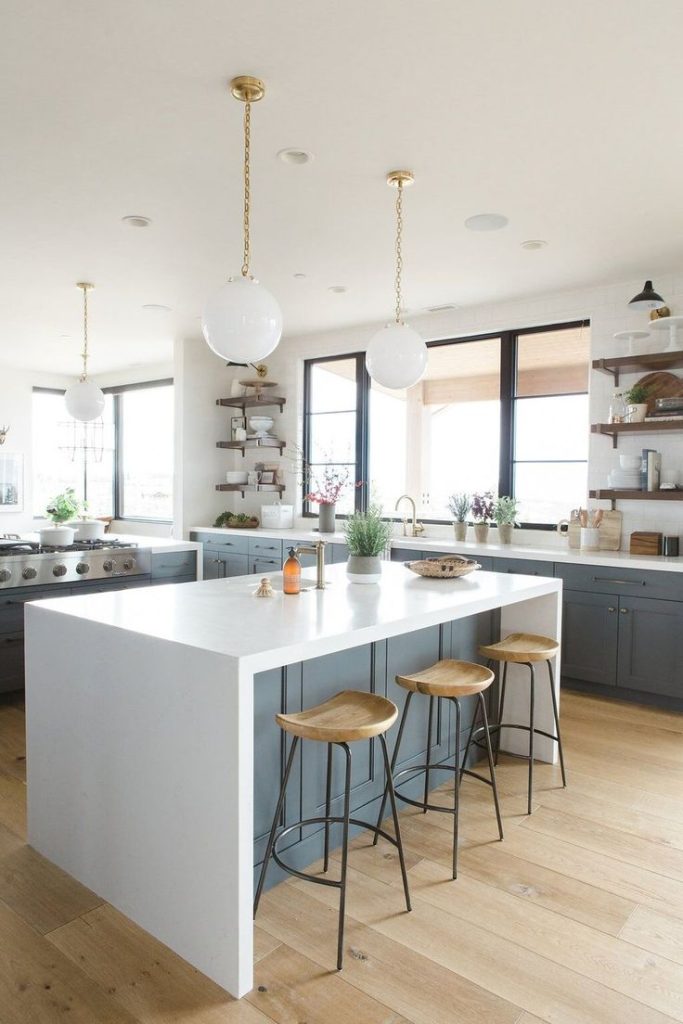
A well-designed kitchen island is more than just an additional countertop; it’s a statement piece that seamlessly integrates into your overall kitchen aesthetic.
When crafting the perfect kitchen island, several key considerations come into play, ensuring that it not only complements the space but also enhances its functionality.
Size and Layout
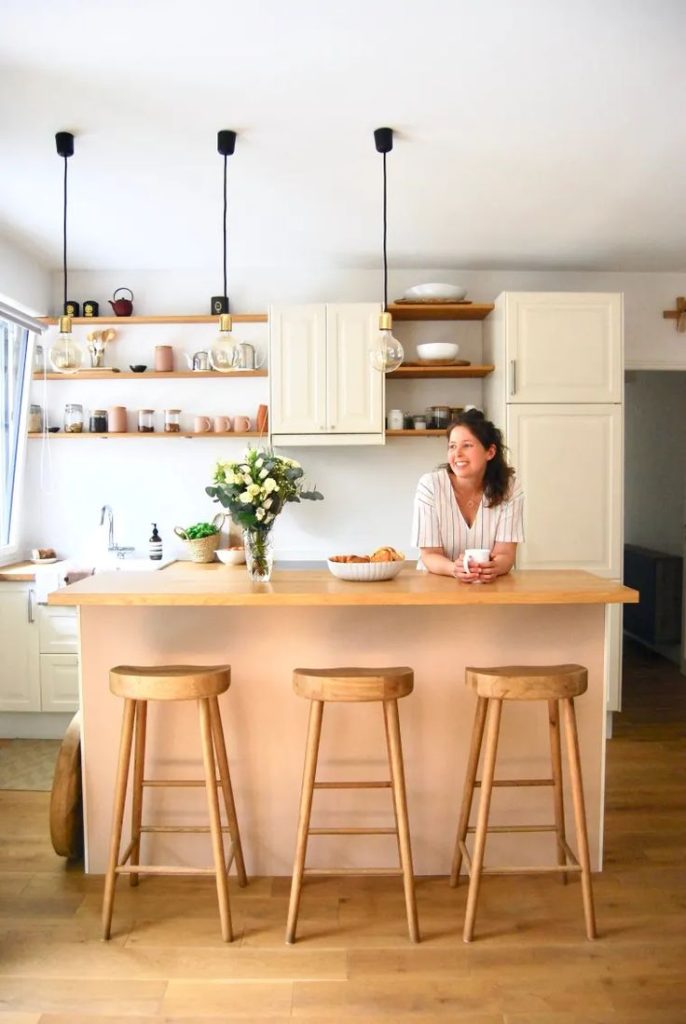
The size and layout of your kitchen island are pivotal factors that can make or break its effectiveness. It’s crucial to strike a balance between providing ample workspace and ensuring it doesn’t overwhelm the surrounding area.
In smaller kitchens, a compact island with clever storage solutions might be the ideal choice, while in more spacious environments, a larger, grander island can become a stunning centerpiece.
Consider the traffic flow around the kitchen island, ensuring there’s enough room for people to move freely while you’re working or entertaining.
Think about the height of the island; it should align with the rest of your kitchen’s countertops for a cohesive look.
Style and Aesthetic
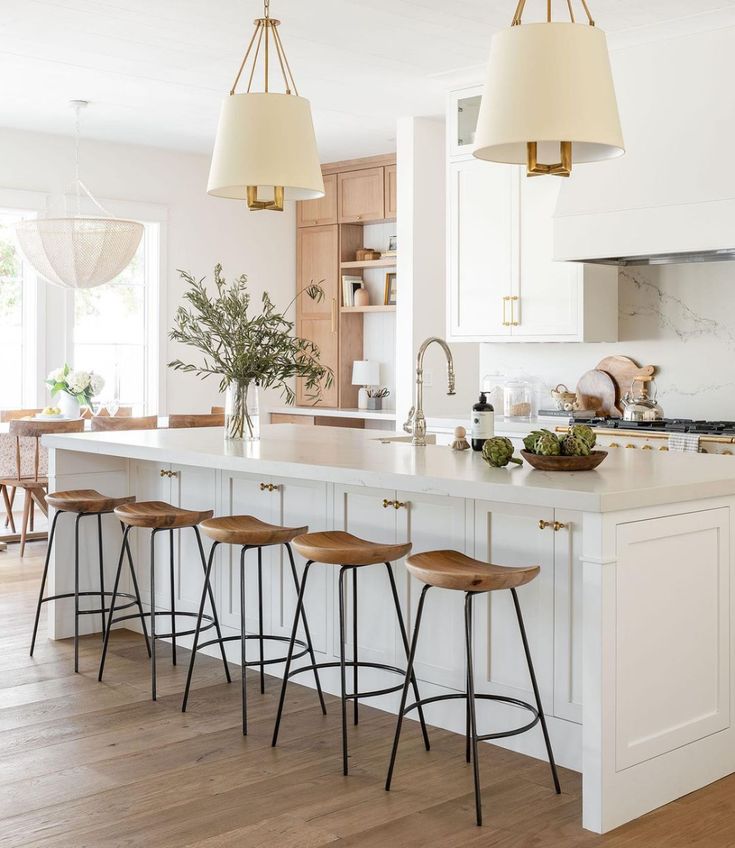
Your kitchen island should be an extension of your design preferences, harmonizing with the overall style of your kitchen.
Whether your tastes lean towards sleek and modern, rustic and farmhouse-inspired, or something in between, there are a plethora of design options to choose from.
From materials like marble and quartz to wood and stainless steel countertop, each imparts its unique character.
Pay attention to details like edge profiles, finishes, and hardware to ensure that your island seamlessly blends with the rest of your kitchen decor.
Material and Countertop Space Choices
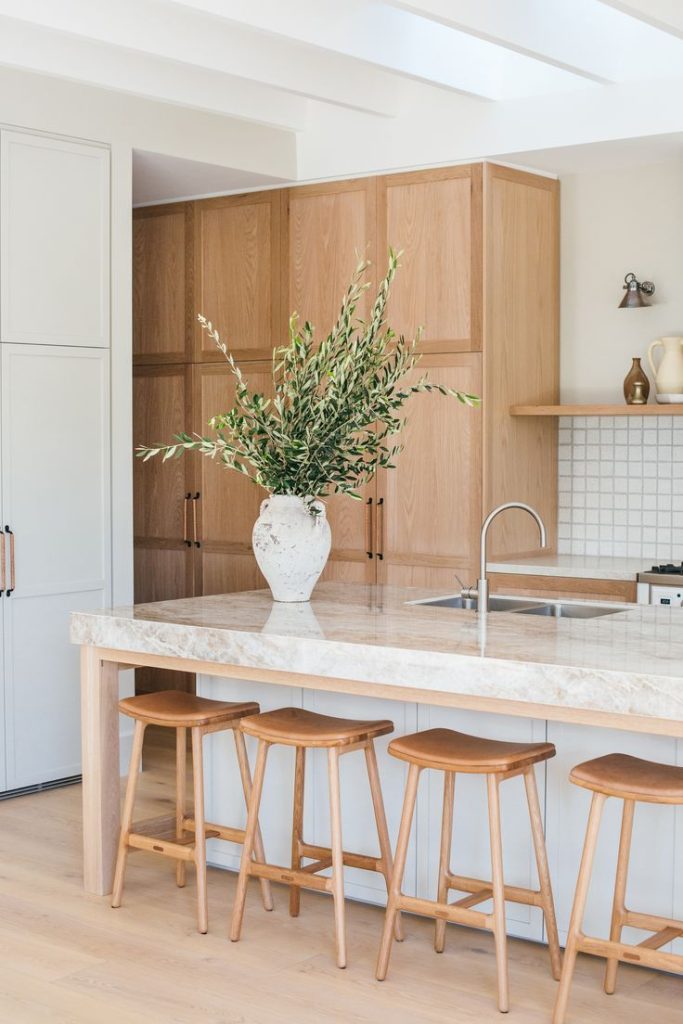
The material you choose for your kitchen island’s countertop can significantly impact both its functionality and aesthetic appeal. Options for marble countertops abound, ranging from durable and heat-resistant granite to the warm, inviting charm of butcher block.
Consider factors like maintenance requirements, durability, and how the material complements your overall design scheme. A well-chosen countertop not only enhances the island’s visual appeal but also ensures it stands up to the rigors of daily use.
Designing the perfect kitchen island is a balance of form and function.
By carefully considering the size, layout, style, and materials, you’ll create an island that not only elevates your kitchen’s visual appeal but also enhances its practicality and give you more countertop space.
In the next section, we’ll explore functional add-ons and accessories that can further optimize your island’s utility.
Exploring Different Types of Kitchen Islands
When it comes to kitchen islands, the possibilities are as diverse as the styles of kitchens themselves. Each type offers unique features and benefits, allowing you to tailor your island to suit your specific needs and design preferences.
Freestanding Islands
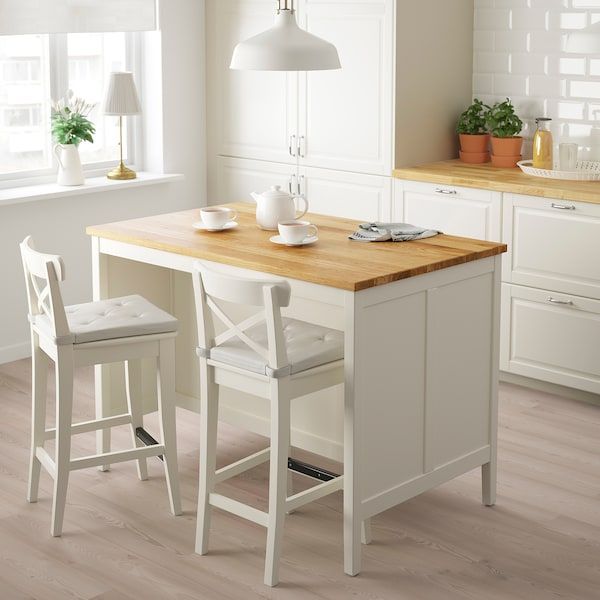
These islands are movable and not attached to any walls or fixed structures. They can be easily repositioned or even removed if necessary, providing flexibility in your kitchen layout.
Built-In Islands
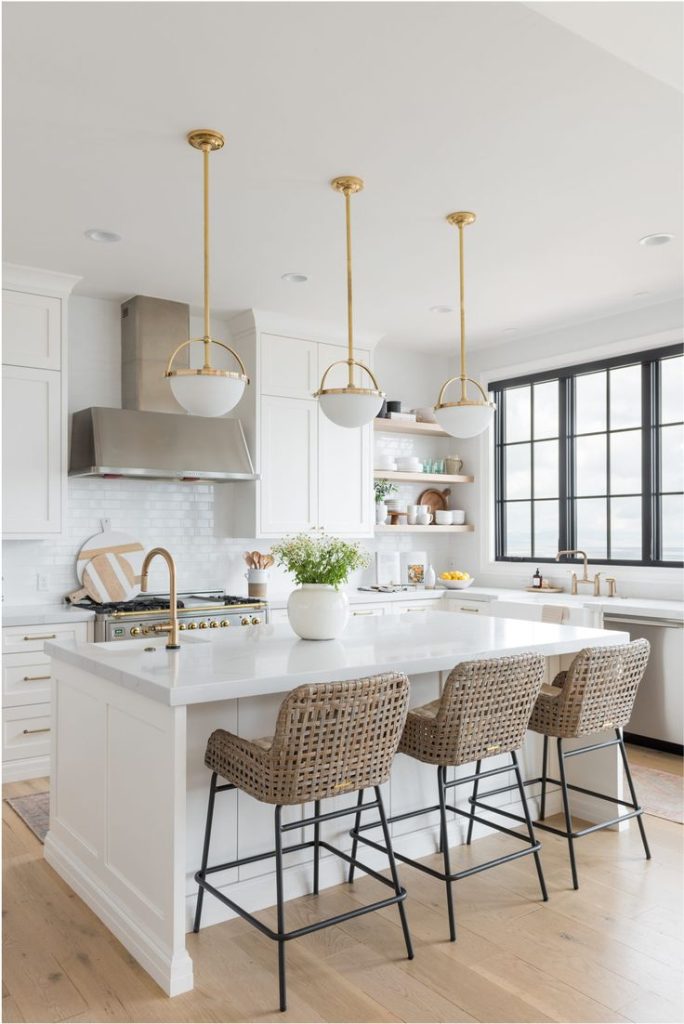
Built-in islands are anchored to the floor and often integrated into the overall kitchen design. They offer a seamless, custom look and can incorporate various features like cooktops, sinks, and storage.
Multi-Level Islands
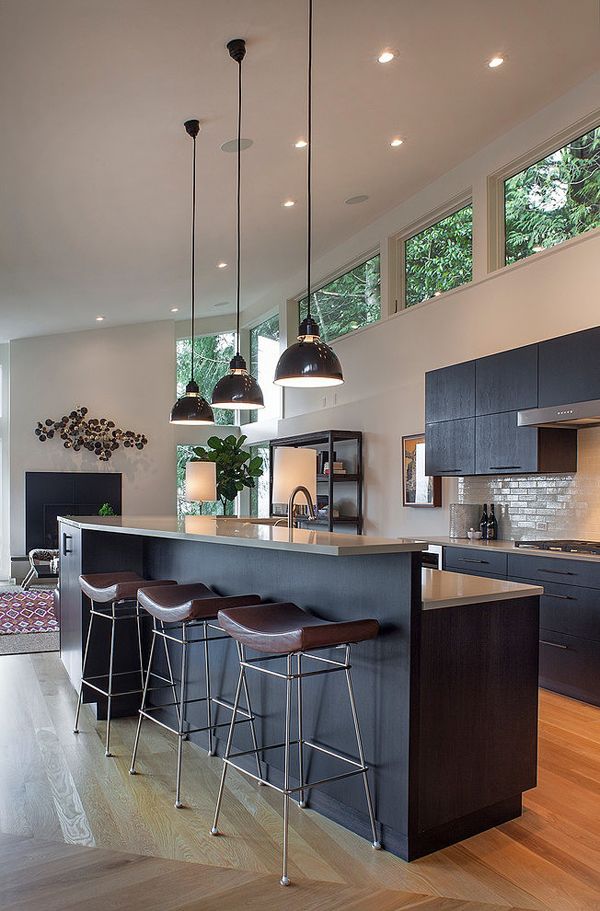
These islands feature different countertop heights, typically with a lower section for food preparation and a higher section for dining or seating. This design adds visual interest and functionality to the counter space itself.
Peninsula Islands
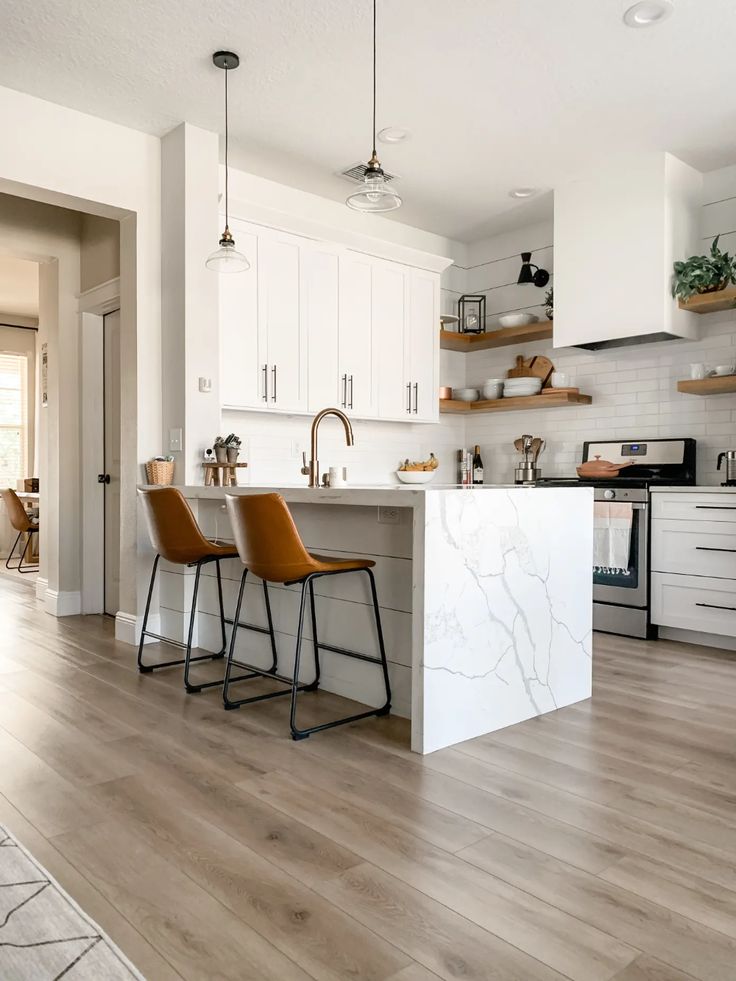
While not entirely free-standing, peninsula islands are attached to a wall or cabinetry on one side. They provide a similar function to islands but are ideal for kitchens with limited space.
Rolling or Cart Islands
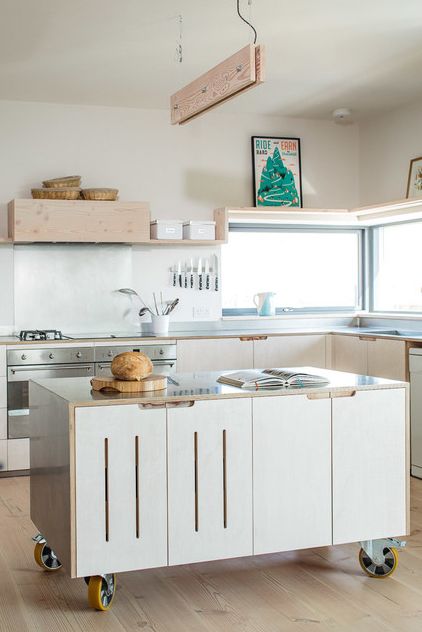
Designed for ultimate flexibility, rolling islands are on wheels and can be easily moved around the kitchen. They’re perfect for small kitchens with extra counter space or as additional prep space.
Open Shelving Islands
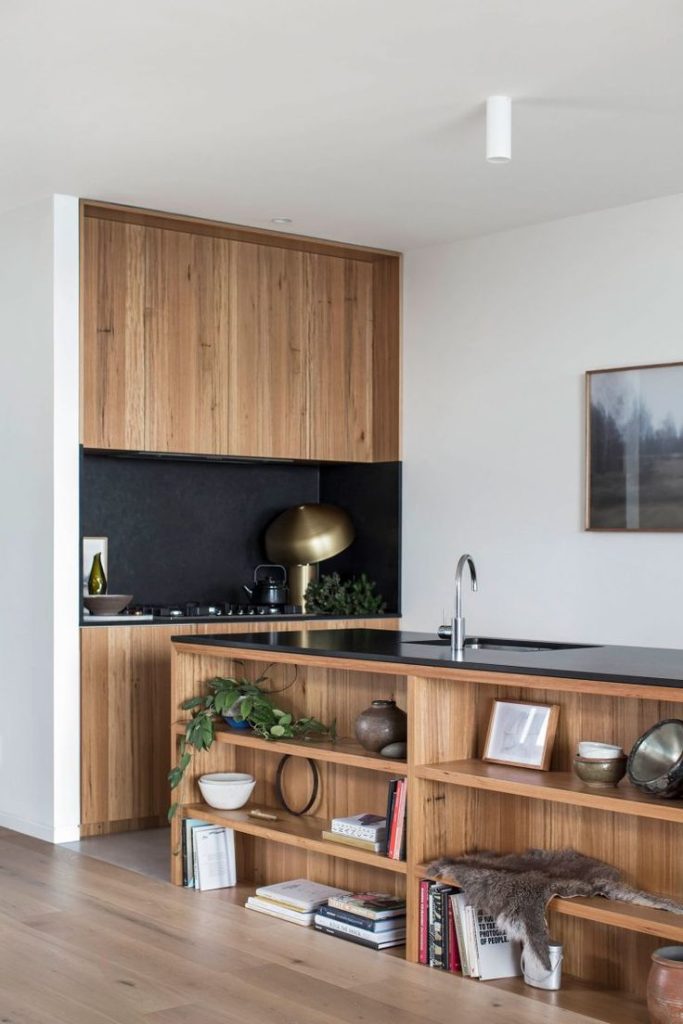
These islands incorporate open shelves instead of closed cabinetry. They create a more airy, open feel and provide easy access to frequently used items.
Table Extension Islands
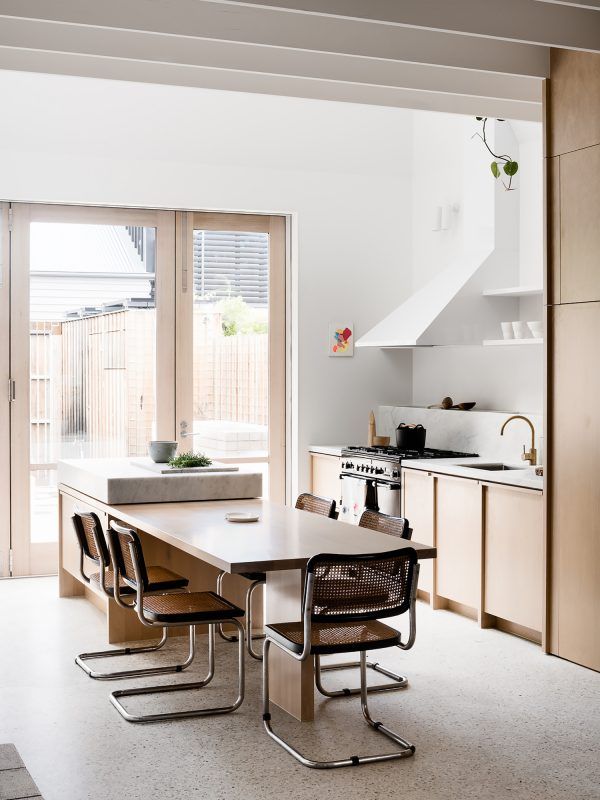
These islands have a table-like extension at one end, creating a comfortable dining area. This design is ideal for smaller kitchens where a separate dining table may not be feasible.
Customized Islands with Specialized Features
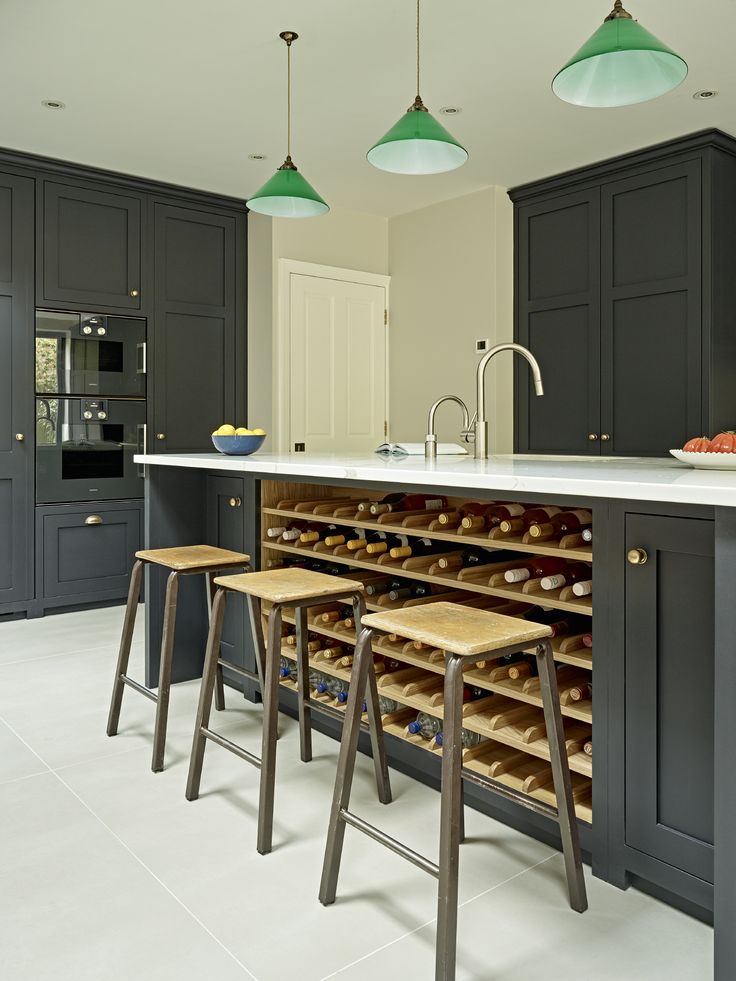
These islands are designed with specific functionalities in mind, such as baking stations, wine storage, or even pet-friendly features like feeding stations.
Exploring these different types of kitchen islands can spark ideas and help you determine which style aligns best with your space, lifestyle, and design preferences.
Whether you opt for a freestanding cart for added versatility or a custom-built island with specialized features, the right choice will enhance both the form and function of your kitchen. Happy island hunting!
Functional Add-ons and Accessories
A well-designed kitchen island doesn’t just stop at its basic structure; it’s a canvas for creativity and functionality.
By incorporating strategic add-ons and accessories, you can customize your island to meet your specific needs and preferences.
Built-in Appliances
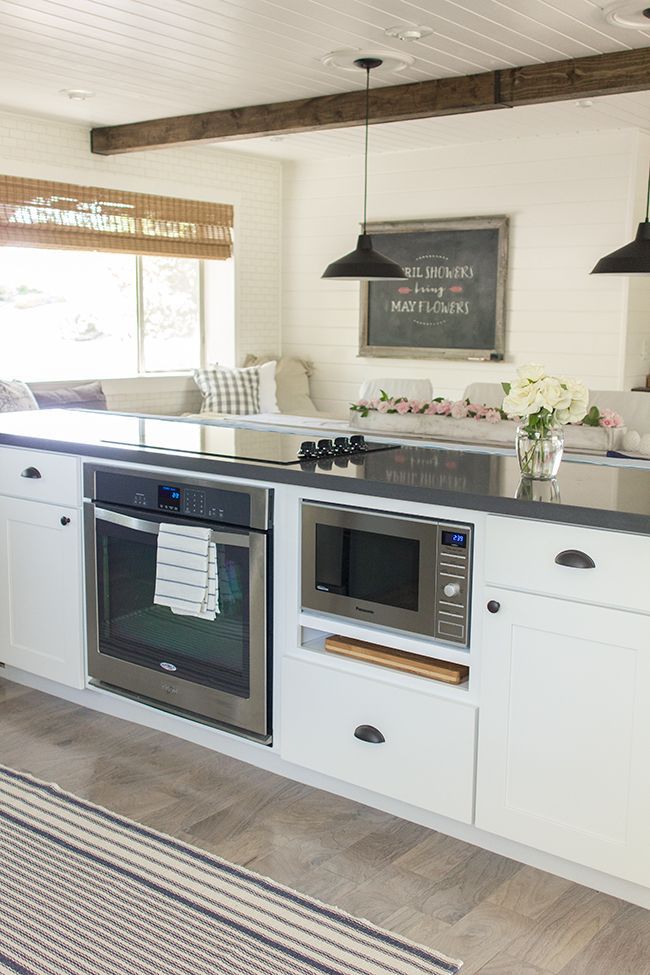
Integrating stainless steel appliances into your kitchen island can revolutionize the way you prepare meals. Consider options like a built-in cooktop or range, which not only streamline your cooking process but also create a seamless, uncluttered look.
A strategically placed sink can transform your kitchen island into a convenient food prep station, complete with easy access to water.
For wine enthusiasts or avid entertainers, a wine cooler or beverage fridge can be a luxurious addition, ensuring your favorite drinks are always at the perfect temperature for guests and gatherings.
Seating Arrangements
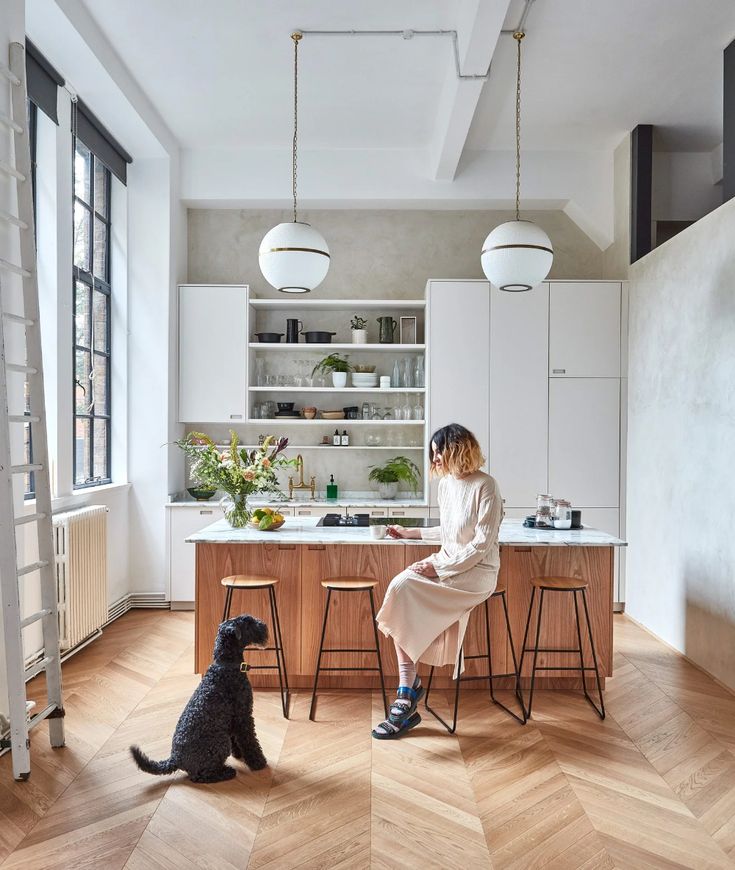
If your kitchen island serves as a social hub for gatherings, incorporating seating is a must.
Whether it’s bar stools along one side or a combination of stools and a built-in bench, providing a comfortable spot for guests to relax while you cook or enjoy a meal together adds an inviting touch.
Consider the height of your kitchen island and the comfort of the seating to ensure a seamless and enjoyable experience for everyone.
Kitchen island with regular seating area
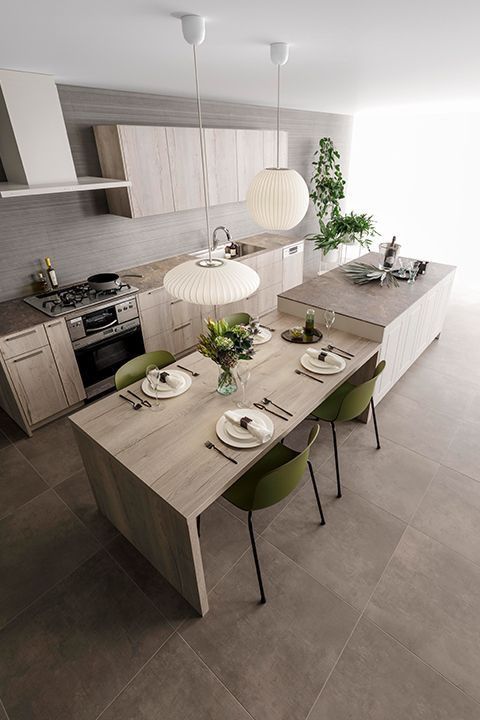
The kitchen island with regular seating offers a more relaxed and communal dining experience and it can replace classic dining table. By incorporating regular chairs or bench seating, you create a comfortable space for family and guests to gather, chat, and enjoy meals.
This setup encourages a laid-back atmosphere, perfect for long, leisurely dinners or casual gatherings. It also provides flexibility in terms of seating arrangements, allowing you to customize the kitchen island to suit your specific needs.
Whether it’s a family breakfast or a friendly get-together, islands with regular seating ensure everyone feels at ease, fostering a sense of togetherness in the heart of your home.
Kitchen island with bar stools
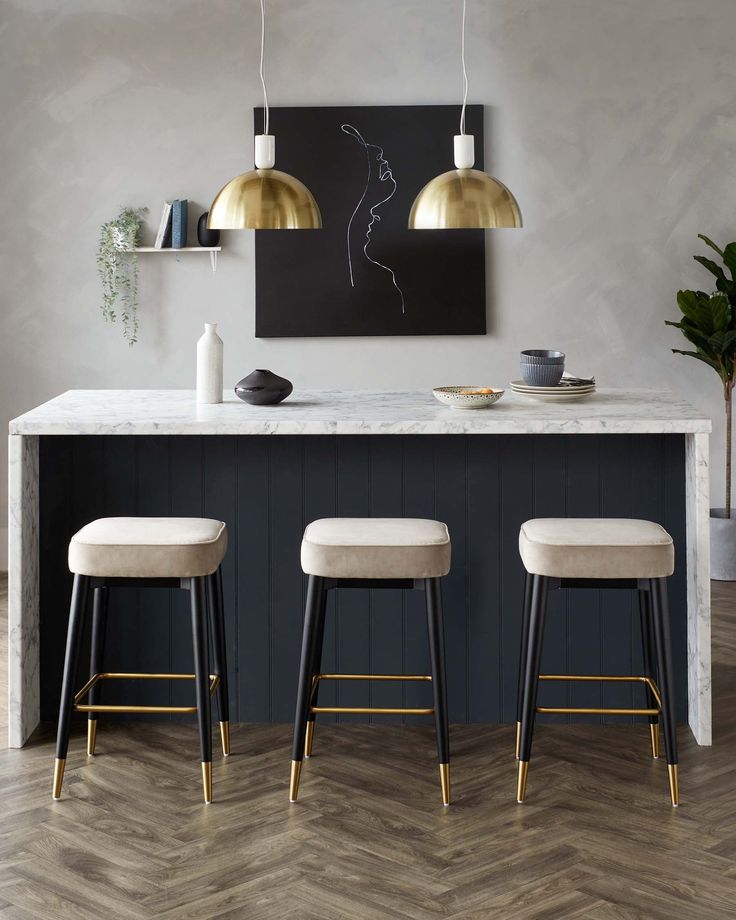
The kitchen island with bar stools blends functionality and style seamlessly. They provide a casual dining spot and a gathering place for conversations, right in the heart of your kitchen.
This setup maximizes space and adds a modern touch to your kitchen’s look. Whether it’s a quick meal or a social gathering, bar stools make your island a versatile hub of activity and connection.
Storage Solutions
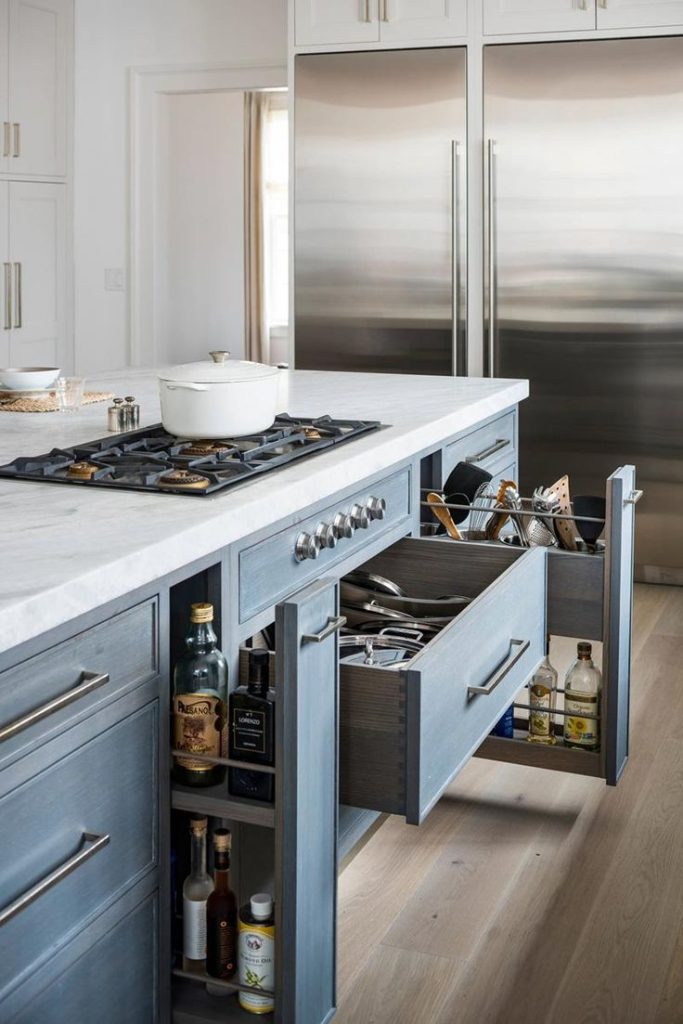
Efficient storage is a hallmark of a well-designed kitchen island. From deep drawers for pots and pans to pull-out spice racks and specialized compartments for cutting boards, there are countless ways to maximize the utility of your island’s storage.
Think about your specific needs and how you use your kitchen on a daily basis. Tailor the storage options to accommodate your cookware, utensils, and other essentials, ensuring they’re easily accessible yet neatly organized.
By incorporating these functional add-ons and accessories, you’ll not only enhance the practicality of your kitchen island but also customize it to perfectly align with your lifestyle.
In the following section, we’ll delve into the crucial aspects of lighting and ventilation to ensure your kitchen island remains a well-lit and comfortable workspace.
Proper lighting and ventilation are often overlooked aspects of kitchen island design, yet they play a crucial role in ensuring that this dynamic space remains both functional and comfortable.
Lighting and Ventilation
Proper lighting and ventilation are often overlooked aspects of kitchen island design, yet they play a crucial role in ensuring that this dynamic space remains both functional and comfortable.
Task Lighting
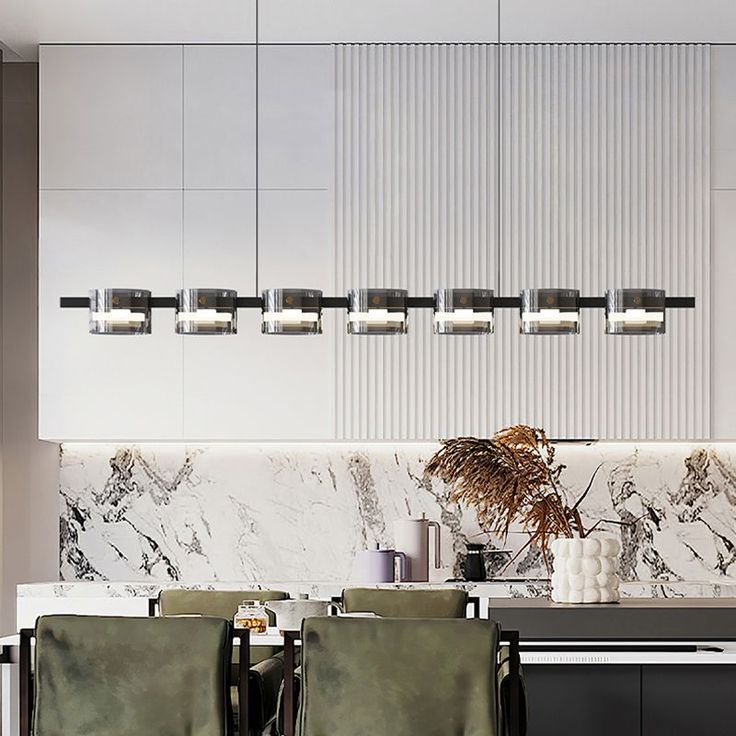
Task lighting is paramount for creating a well-lit workspace on your kitchen island. Pendant lights, recessed lighting, or a combination of both can be strategically positioned above the island to provide focused illumination.
Consider the size and layout of your island when determining the number and placement of lights.
Choose fixtures that not only complement your overall kitchen style but also offer adjustable brightness levels to cater to various tasks, from chopping vegetables to reading recipes.
Ventilation Considerations
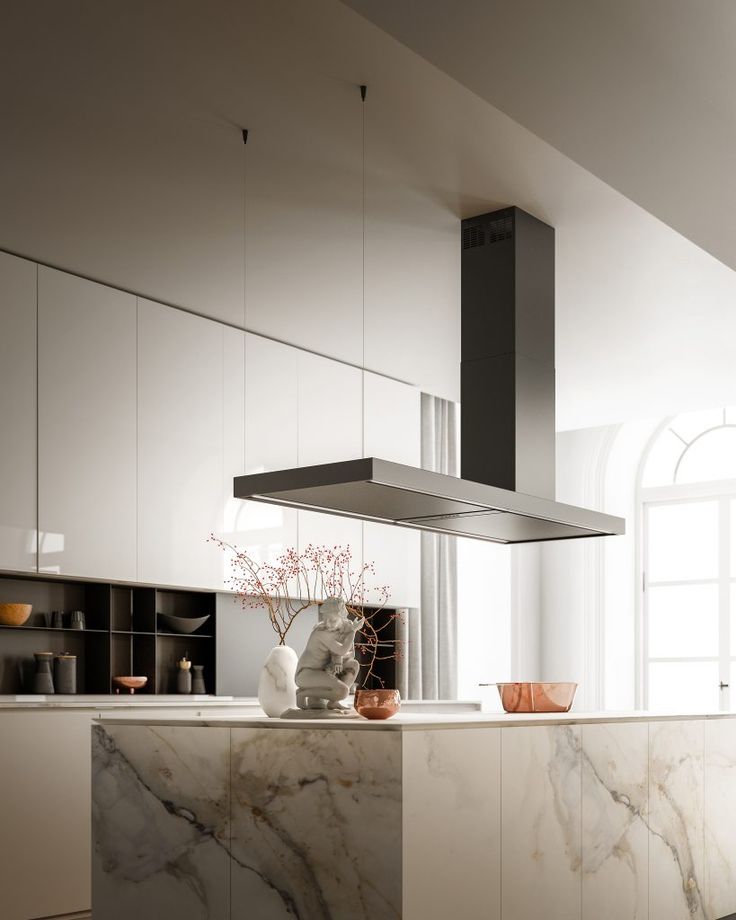
If your kitchen island incorporates a cooktop, proper ventilation is imperative to remove heat, smoke, and cooking odors. A range hood with an integrated fan is a common solution. Ensure the hood is appropriately sized to effectively capture and exhaust air.
For kitchen island without a cooktop, consider options like a downdraft ventilation system, which is discreetly installed into the island’s surface and can be raised when needed.
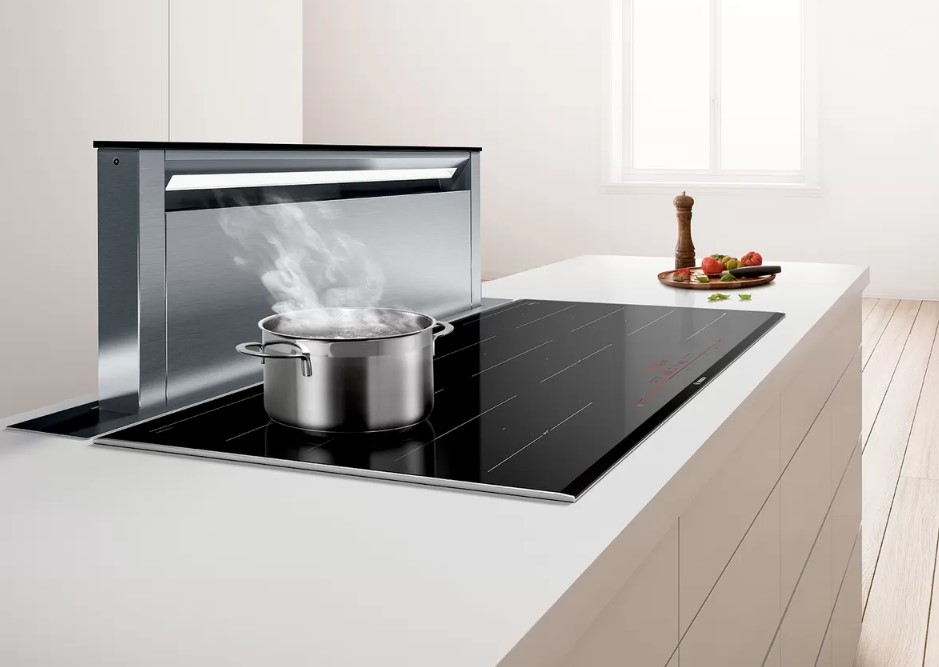
This provides an unobtrusive yet effective means of maintaining air quality in your kitchen.
Additionally, if your kitchen island serves as a social hub, noise levels from ventilation systems should be a consideration. Opt for quieter models to ensure that conversations flow effortlessly even when the fan is running.
By addressing lighting and ventilation, you’re not only enhancing the functionality of your kitchen island but also creating a comfortable and inviting space where cooking and socializing seamlessly coexist.
Now, we’ll delve into maintenance and cleaning tips to ensure that your island remains a pristine and well-maintained focal point in your kitchen.
Maintenance and Cleaning Tips
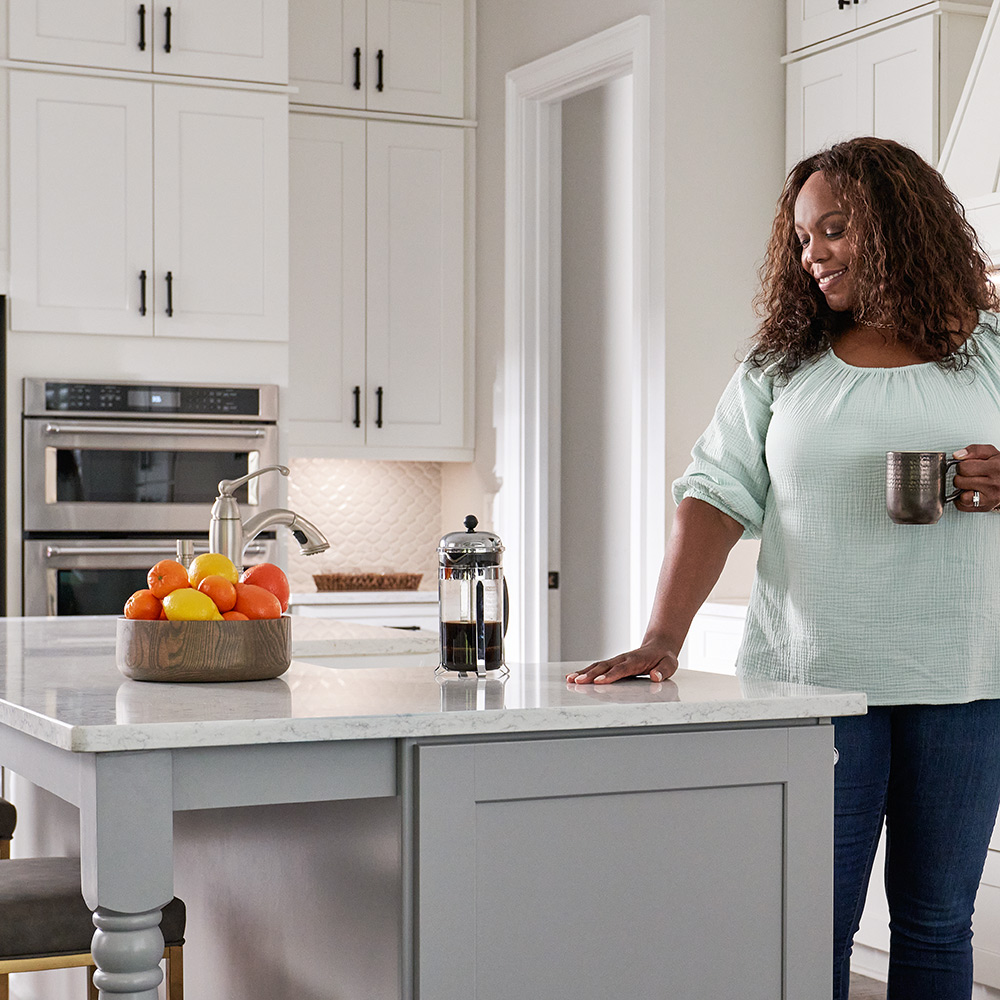
To ensure that your kitchen island continues to shine as a centerpiece of functionality and style, regular maintenance and proper cleaning practices are essential.
Choosing the Right Cleaning Products
Selecting the appropriate cleaning products for your kitchen island’s materials is crucial. For example, if you have a granite or quartz countertop, opt for non-abrasive, pH-neutral cleaners.
For butcher block, consider using mineral oil to maintain its natural beauty and prevent drying or cracking.
Avoiding Harsh Scrubbing Tools
While it’s important to keep your kitchen island clean, avoid using abrasive scouring pads or harsh chemicals that can damage surfaces. Go for soft cloths, microfiber towels, or non-abrasive sponges for regular cleaning.
Prompt Spill Clean-Up
To prevent staining or damage, it’s important to clean spills promptly. For liquids, blot the area with a clean cloth. For solids, gently scrape using a plastic spatula or a non-abrasive scraper.
Protecting Against Heat and Moisture
Use trivets or hot pads under hot cookware to protect the surface of your island. Additionally, avoid placing wet or damp items directly on the countertop, as prolonged exposure to moisture can lead to damage.
Regular Inspection and Maintenance
Periodically inspect your kitchen island for any signs of wear, such as loose hardware, cracks, or stains. Addressing minor issues promptly can prevent them from becoming larger, more costly problems.
By incorporating these maintenance and cleaning practices into your routine, you’ll ensure that your kitchen island remains a stunning and functional centerpiece for years to come.
In the next section, we’ll showcase inspirational kitchen island designs to spark your creativity and help you envision the perfect island for your space.
Showcasing Inspirational Kitchen Island Ideas
To provide you with a dose of inspiration for your own kitchen island project, let’s explore a selection of diverse and captivating designs:
The Rustic Retreat
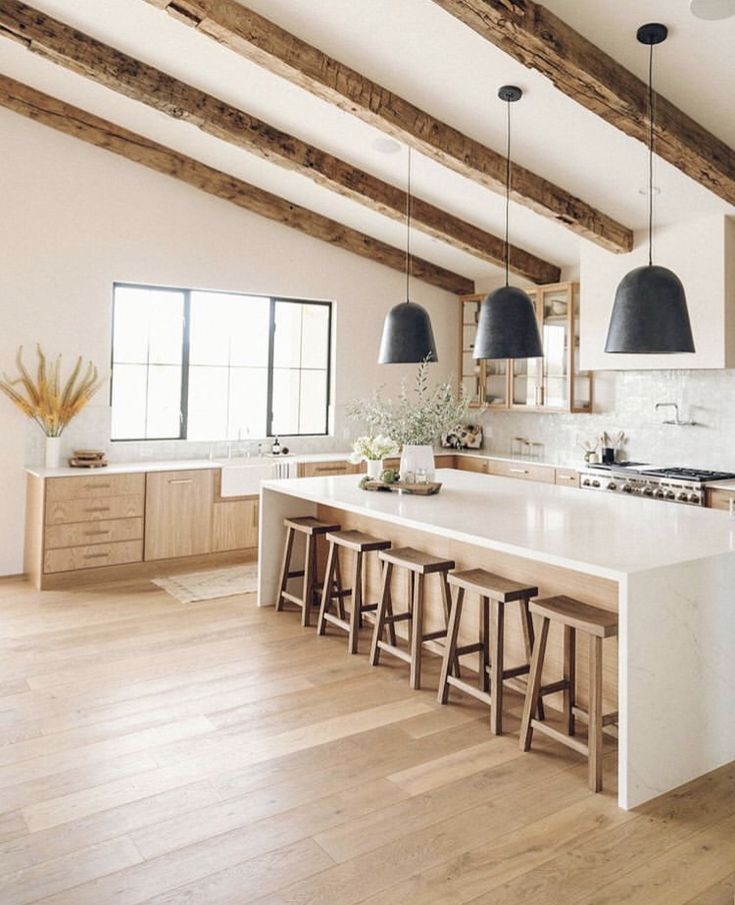
Featuring a reclaimed wood countertop and open shelving, this island exudes warmth and character. It’s perfect for those seeking a cozy, farmhouse-inspired ambiance.
Sleek and Minimalistic Elegance

A monochrome palette, clean lines, and a waterfall-edge countertop define this modern masterpiece. This design is ideal for those who appreciate a streamlined, contemporary look.
Entertainment Central
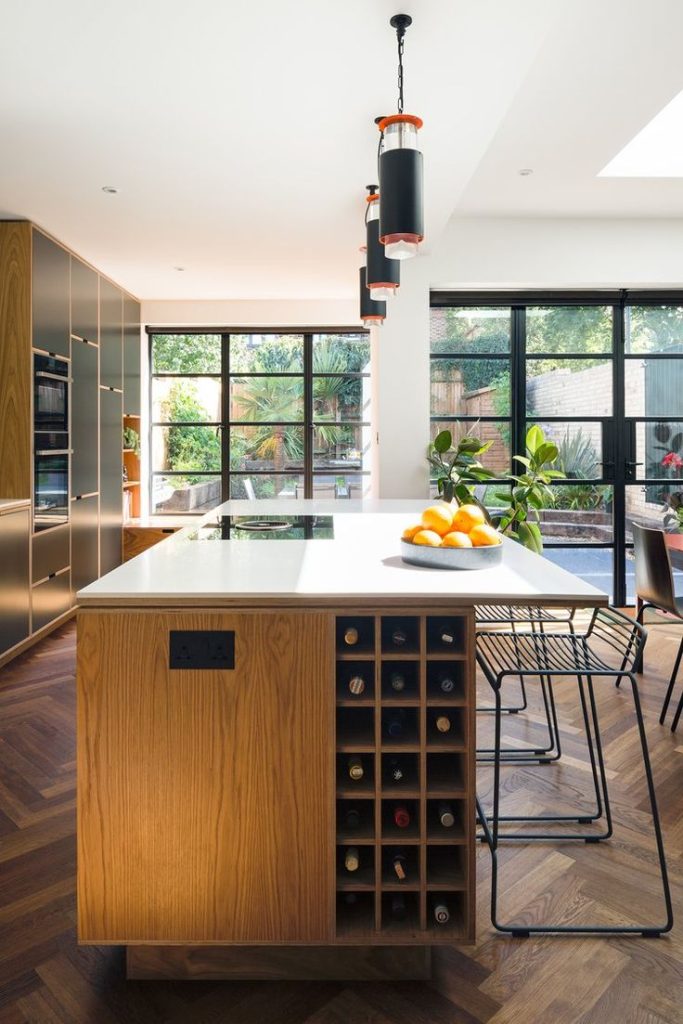
With a built-in wine cooler, ample seating, and integrated speakers, this kitchen island is designed for hosting unforgettable gatherings. It seamlessly blends function with entertainment.
Mediterranean Charm
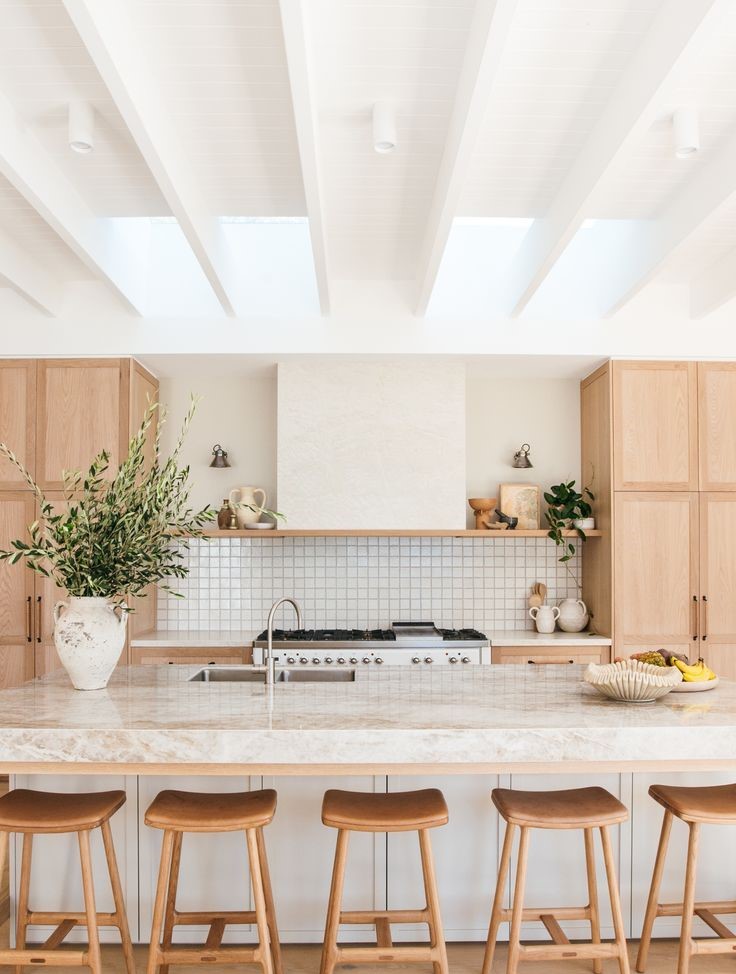
Tiled accents, wrought iron detailing, and a vibrant color palette transport you to the shores of the Mediterranean. This design is perfect for lovers of eclectic, worldly aesthetics.
The Culinary Maestro’s Haven
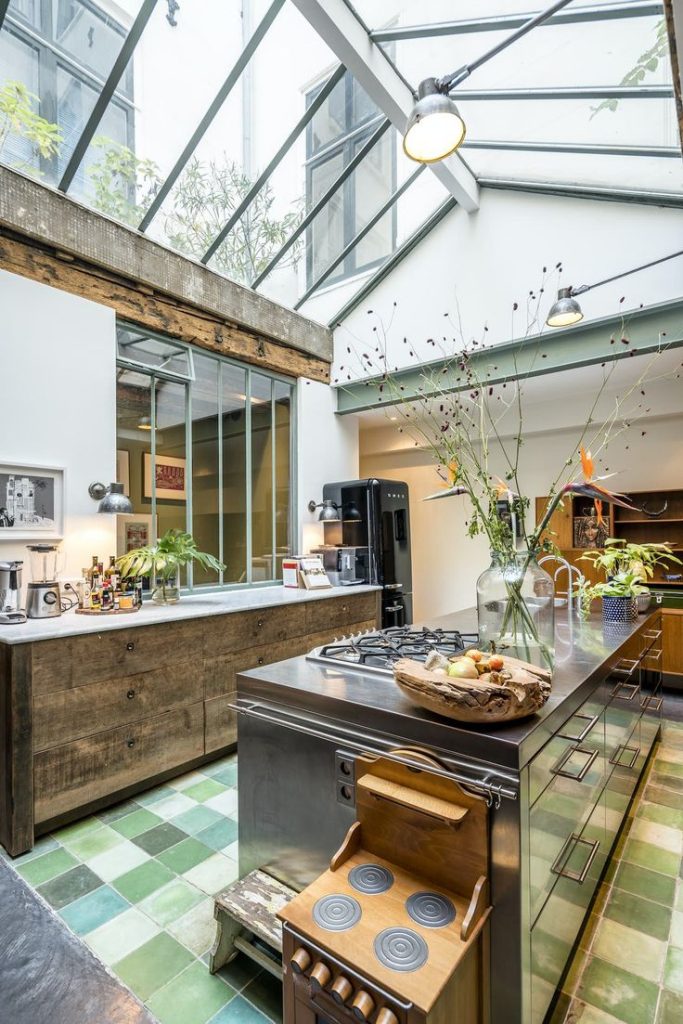
Featuring a professional-grade cooktop, pot racks, and ample storage for culinary tools, this kitchen island is a dream for passionate chefs who demand both style and functionality.
Coastal Serenity
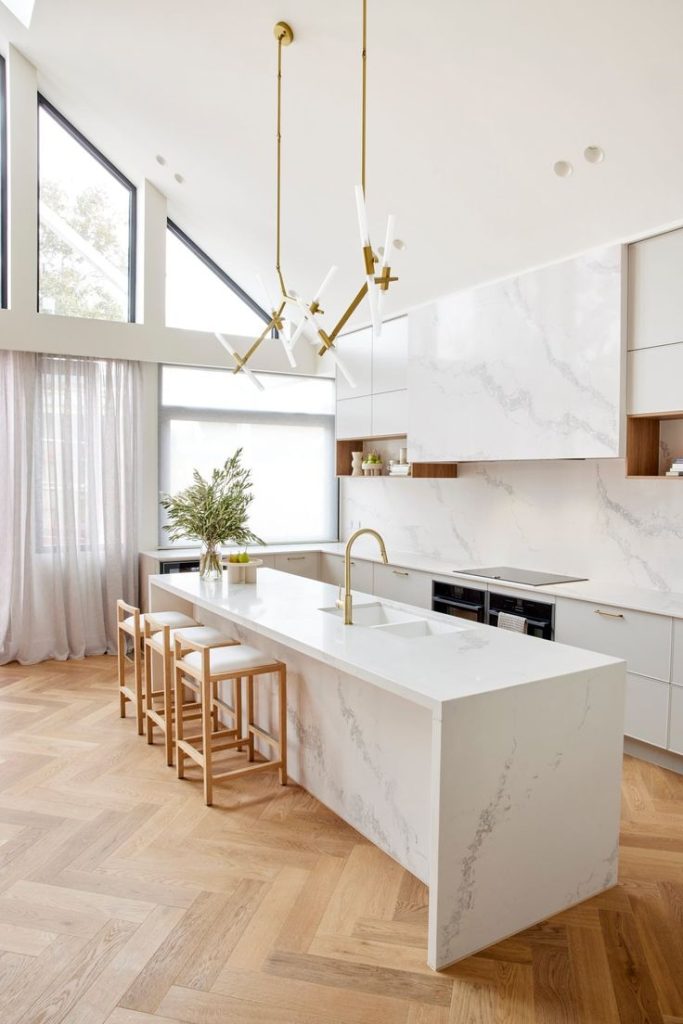
Incorporating beach-inspired hues, natural textures, and a breezy layout, this island brings the tranquility of the coast into your kitchen. It’s perfect for those who seek a relaxed, beachy vibe.
These designs serve as a springboard for your own creativity. Whether you’re drawn to the rustic allure, the modern allure, or something entirely unique, envisioning the perfect kitchen island for your space is the first step toward bringing your vision to life.
In the following section, we’ll address budgeting and cost considerations to help you plan your kitchen island project effectively.
Budgeting and Costs
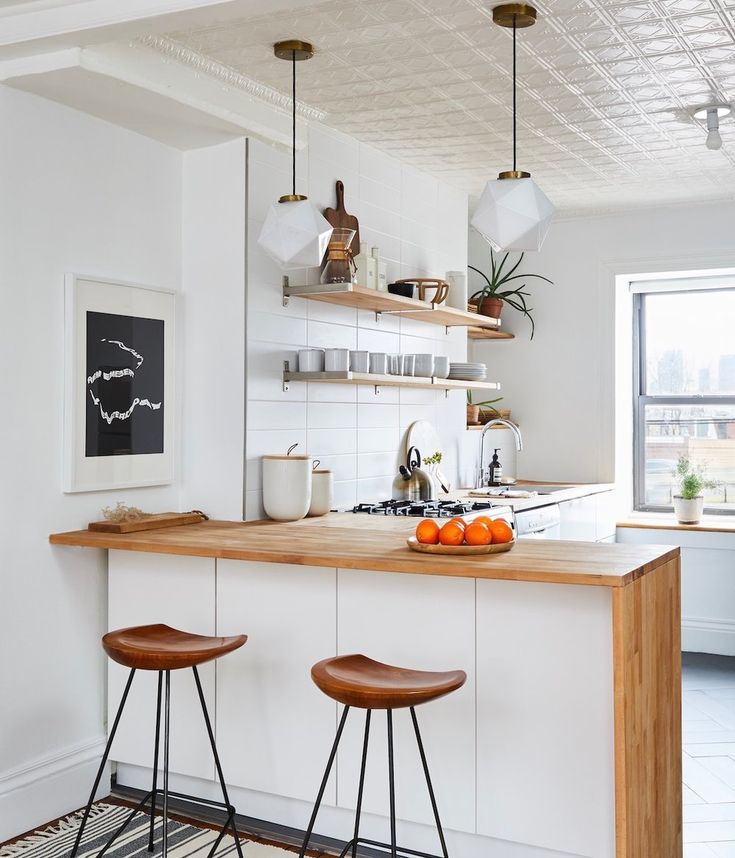
While a kitchen island can be a transformative addition to your culinary space, it’s essential to approach the project with a clear budget in mind. Here are some key considerations to help you plan effectively:
Material Selection
The choice of materials for your kitchen island will have a significant impact on the overall cost.
High-end options like marble or custom-crafted wood may incur higher expenses compared to more budget-friendly alternatives like laminate or butcher block.
Size and Complexity
The size, layout, and complexity of your island will directly influence the cost. A larger island with intricate features like built-in appliances or specialized storage solutions may require a larger budget.
Add-ons and Accessories
Incorporating additional features like built-in appliances, seating, or specialized storage will contribute to the overall cost. Consider which elements are essential for your specific needs and prioritize accordingly.
Professional Installation
If your kitchen island requires custom fabrication or specialized installation, be sure to factor in the cost of hiring professionals. This may include carpenters, countertop installers, electricians, and plumbers.
Finishing Touches
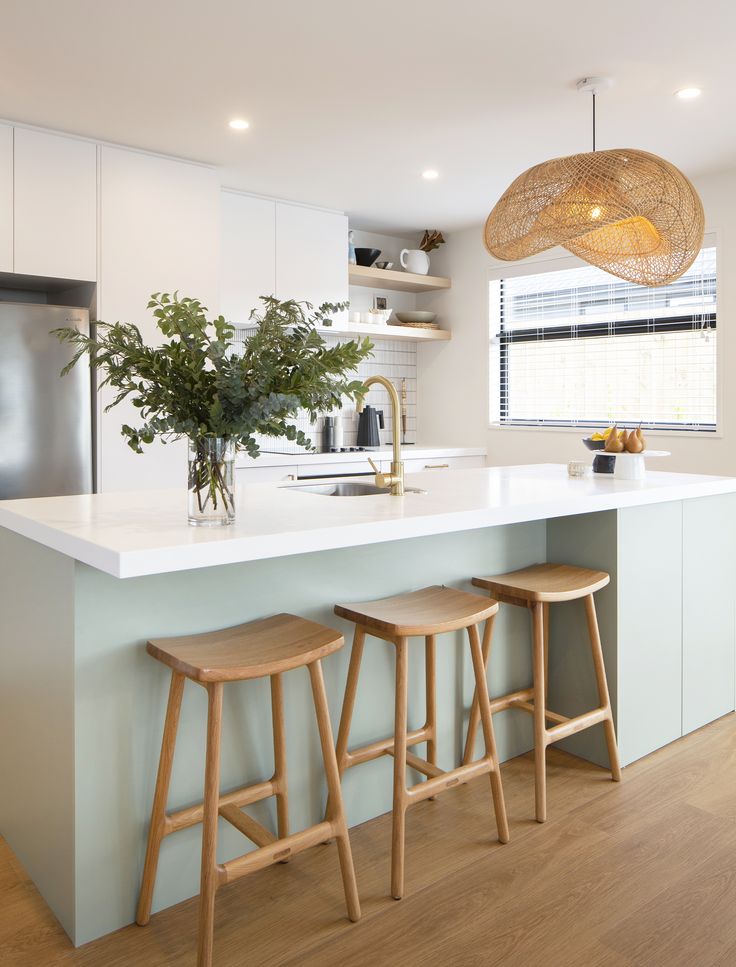
Don’t forget to budget for finishing touches like lighting fixtures, hardware, and any decorative elements that will complete the look of your kitchen island.
Contingency Fund
It’s wise to set aside a contingency fund for unexpected expenses or adjustments that may arise during the project. This provides a cushion to address any unforeseen challenges.
By carefully considering these factors and establishing a realistic budget, you can embark on your kitchen island project with confidence, knowing that you’ve planned for both the essentials and potential contingencies.
Conclusion
A kitchen island is more than just a countertop; it’s a dynamic centerpiece that has the power to redefine your culinary space. Its potential is boundless, from maximizing space to adding functional elements that cater to your specific needs and preferences.
In crafting the perfect kitchen island, consider every detail, from size and layout to style and materials. Thoughtful choices ensure a seamless integration with your existing kitchen while enhancing both form and function.
The addition of functional elements, strategic lighting, and regular maintenance are crucial in elevating the island’s utility and aesthetic appeal.
Remember, a well-planned budget paves the way for a successful project. Accounting for essentials and unforeseen contingencies ensures that your kitchen island is not only a reflection of your style but also a hub for creativity and cherished moments.
As you embark on this transformative journey, let this guide serve as your trusted compass, guiding you toward a space that truly embodies the heart of your home.
May your island become a testament to the art of harmonizing form and function, creating a space that fosters connection, creativity, and culinary delight.



 Hana Agic · Oct, 31st · 16 minutes read
Hana Agic · Oct, 31st · 16 minutes read

